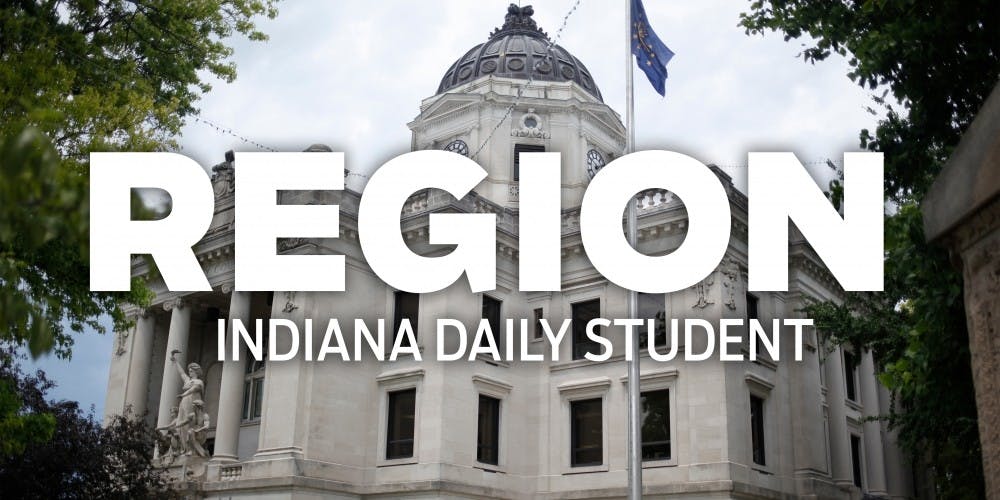A Safe and Civil City
One hundred and fifty police officers and civilian employees regularly report to work at the Bloomington police station. Every closet, nook and cranny has been converted to office space.
Under the silver metallic sign reading “Police Headquarters” melded onto the station’s front wall are the words “Bloomington, Indiana: A Safe and Civil City.”
But in an interview last Wednesday, city council president Susan Sandberg said more officers are needed to maintain Bloomington's status as a safe and civil city, especially with the growing opioid epidemic and the unrest at Peoples Park and along Kirkwood Avenue.
Sandberg received requests from BPD Chief Mike Diekhoff for two new patrol officers, six dispatchers and one civilian employee to allow officers tied up with administrative work back into the field. She said she hopes the new officers will mean a step in the right direction.
Looking at the numbers
In cities with 50,000 to 99,999 residents, the average number of police officers per 1,000 residents is 1.8, according to the International Association of Chiefs of Police. Bloomington has one of the lowest police officers per capita in the 110 Indiana cities surveyed by the FBI's Uniform Crime Report Program. It also only has 1.13 officers per 1,000 residents—more than 25 percent less than the national average.
Diekhoff told the city council the dispatch office in particular doesn’t reach these national averages, especially when employees take sick leave or personal time off.
Sandberg said concerns about low officer-to-resident ratios grow deeper as Bloomington grows, jumping from 80,000 to 84,000 between 2010 and 2016, according the the U.S. Census Bureau.
But focusing on statistics limits understanding of the problem, Sandberg said. While it's important to pay attention to national averages and gauge where Bloomington is, she said numbers don't take training, quality of officers or resources into account.
Recruiting difficulties
Sandberg said there’s room in the budget for 100 field officers rather than the 96 the BPD has, so the problem lies more in recruiting and training officers quickly rather than budgeting.
But hiring police officers is a lengthy process, Sandberg said. Even after initial screening and tests, potential officers need to go through a 14- to 16-week law enforcement academy and 16-week field training.
Eleven officers are currently finishing up training, and Sandberg said the BPD is excited to have the extra help, but it may still be a long wait.
Because of how long this process is, she said it may be best to focus on getting current officers through training rather than hiring new ones and beginning the process again.
But at a city council budget hearing Aug. 15, Diekhoff said recruiting isn’t as easy as it used to be, and the size of applicant pools backs that up.
“We’re at the tail end of a hiring process, and we had really low numbers,” he told them.
Sandberg said fewer people are looking to become police officers, and those who do can be more selective about which departments they choose. She said people’s reluctance to join the police force may stem from negative national sentiments toward law enforcement.
Programs like Coffee with a Cop involve engaging with the public in a positive way and may curtail these attitudes, but changing how people view law enforcement won’t be immediate, Sandberg said.
Starting salaries can also keep people from entering the force and has, at times, drawn officers away from Bloomington and to other municipalities, she said.
Sandberg said Bloomington tries to maintain competitive salaries that mirror increasing costsof living. But she isn’t sure pay increases, such as the projected 1.75 percent salary raise for officers in 2018, will be enough of an incentive for new officers.
“If you want to encourage people to enter your profession, you need a competitive wage,” she said.
Planning for the future
In the long term, Sandberg said she wants to see the department expand to reach national averages in ratios between police officers and residents. She said she will continue to rely on Diekhoff to explain any concerns and obstacles, such as the lengthy recruiting and training process, to council members.
“He has a good finger on the pulse of his personnel,” she said. “He knows what they need and is good at communicating that to us.”
One of Sandberg’s main concerns is that if the council chooses to hire a lot of new officers at once, Bloomington won’t be able to handle increased costs in the long run. Even if the city can pay for the new jobs one year, it may not be able to sustain those costs in the years that follow, she said.
“What happens when times get hard?” Sandberg said. “Will we be able to continue to support these people?”
Sandberg said adding a few new officers each year rather than all at once will keep them from busting the budget in a single year. This can also prevent overwhelming training programs.
During these years, she said the BPD should continue to train officers efficiently and emphasize recruiting to build a pool of potential officers to draw from when the time is right. In the meantime, she said Bloomington residents should encourage people to join the police force by showing public support for officers and understanding that they are not the enemy.
“The time may be now to budget and plan ahead and get that pipeline sped up a bit to funnel more officers in sometime in the future,” she said.






